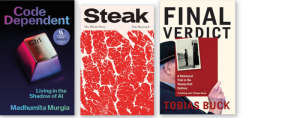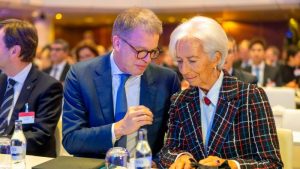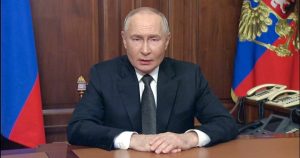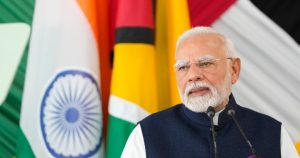The Baton and the Cross — Putin’s cynical co-opting of Russia’s church
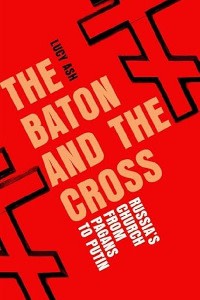
Unlock the Editor’s Digest for free
Roula Khalaf, Editor of the FT, selects her favourite stories in this weekly newsletter.
Who among despots has not thought of the most effective way to rule over their people? The more autocratic the leader, generally the more urgent the question — and so it was that the man hoping to keep his grip on a vast territory in eastern Europe was considering his options. How, Vladimir thought, would he be able to unite his people under one rule? He settled on religion and, in a great show before his subjects, waded into the Dnipro River in Kyiv in a public baptism, ordering everyone else to do the same.
The Vladimir in question was not Putin. It was Vladimir the Great. The year was 988, a momentous date in the history of what was then Kievan Rus, when the paganism of the past was cast out in favour of a new Eastern Orthodoxy, and Russia’s church and state became bound together.
In the millennium since, that relationship has evolved. Controlled by Peter the Great, subjugated by Catherine the Great, nearly decimated by the Soviets, then revived by Putin, the Orthodox Church has, through it all, had one primary function: to strengthen the power of the state.
Exactly how this came to be is the subject of The Baton and the Cross by journalist and former BBC Moscow correspondent Lucy Ash. It covers more than a thousand years of Russian history to tell the story, as she quotes one theologian she interviewed, of “the alliance between the missile and the incense burner.” Ash gave the book its title “to underline the role of the church in enforcing obedience and tightening repression.”
Unlike Catholicism, the Russian Orthodox Church rejects the authority of the Pope as Jesus Christ’s representative on Earth, maintaining that Christ is the head of the church. Orthodox Christians also venerate icons of Christ and other saints, believing that their depicted figures manifest their spiritual presence.
Today’s Russian Orthodox Church is devoted to advancing the Kremlin’s agenda. Its head, Patriarch Kirill, has presided over corruption, attacked the LGBTQ community, obstructed legislation protecting victims of domestic violence and encouraged Russian soldiers to fight in Ukraine by telling them that they’ll be granted eternal salvation. Meanwhile Putin continues to publicly demonstrate his religious observance.
“Could it have been different?” asks Ash. Her research suggests not. When Putin launched his full-scale invasion of Ukraine in February 2022, it was, she writes, an expression of imperial ambitions that long predated the moment. It was under Catherine the Great in the 18th century that Orthodoxy became a lever of territorial expansion. Her wars, in which the Russian Empire extended its borders by around 200,000 square kilometres (about the size of present-day Belarus), were partly enabled by the seizing of church lands and money, continuing the expropriations that began in earnest decades earlier by Peter the Great.

As Ash tells us, Catherine “delved into history to legitimise Russia’s claim to Crimea and Muslim southern borderlands, which she called Novorossiya [New Russia].” That should sound familiar to anyone who remembers the historical gymnastics Putin performed to legitimise Russia’s annexation of Ukraine’s Crimea in 2014.
Moscow’s victimisation of Ukraine looms over the book. It is with horror that we read about the church’s involvement in one of Russia’s most egregious crimes in Ukraine: the forced deportation of 16,000 Ukrainian children into Russia. In the first year of the full-scale invasion, a Centre for Family Placement of Children and Church Care of Children was created by the Patriarchate’s charity department. Meanwhile, a church-linked organisation called Vnuki (“Grandchildren”), described on its website as aiming to “integrate children from the liberated territories . . . into the Russian mental space”, brought children from Ukraine to Moscow to meet Kirill and other senior clerics, including Putin’s alleged confessor.
It is all a long way since the early decades of the Soviet Union when religion, officially banned, had all but disappeared. In its place, “Lenin, the ascetic saint, self-denying monk, supplanted Christ in iconography. His framed portrait replaced the shrines with icons and candles,” Ash writes. It was not until the second world war that Stalin, groping for any institution that might help secure a Soviet victory over the advancing German forces, began to resuscitate “the only organisation capable of inspiring people to die for their country”: the church. In a 2024 poll, 62 per cent of Russians said they identified as Orthodox Christians.
The Baton and the Cross avoids becoming just a history book thanks to Ash’s own reporting — cases such as the man who discovered mass graves of worshippers murdered under Stalin, or a cleric who believed he was the victim of a honeytrap laid by the FSB (a successor to the KGB). This helpfully offers a vivid picture of the ways seismic moments of Russia’s religious past are reverberating today. The many diverse characters Ash meets combine to give the clearest picture of how the machinations of the church’s power structure can function the way it does, revealing how the system requires, not just the ruthless and greedy to survive, but the devoted and the lost too.
The Kremlin’s current claims to spiritual observance would be laughable had the consequences of its actions committed under religious cover not been so deadly. It will be to Ukrainians that Russia will have to seek forgiveness for violating, so cruelly, the second commandment: to love thy neighbour as thyself.
The Baton and the Cross: Russia’s Church from Pagans to Putin, by Lucy Ash, Icon Books £25, 384 pages
Join our online book group on Facebook at FT Books Café and subscribe to our podcast Life & Art wherever you listen
#Baton #Cross #Putins #cynical #coopting #Russias #church
